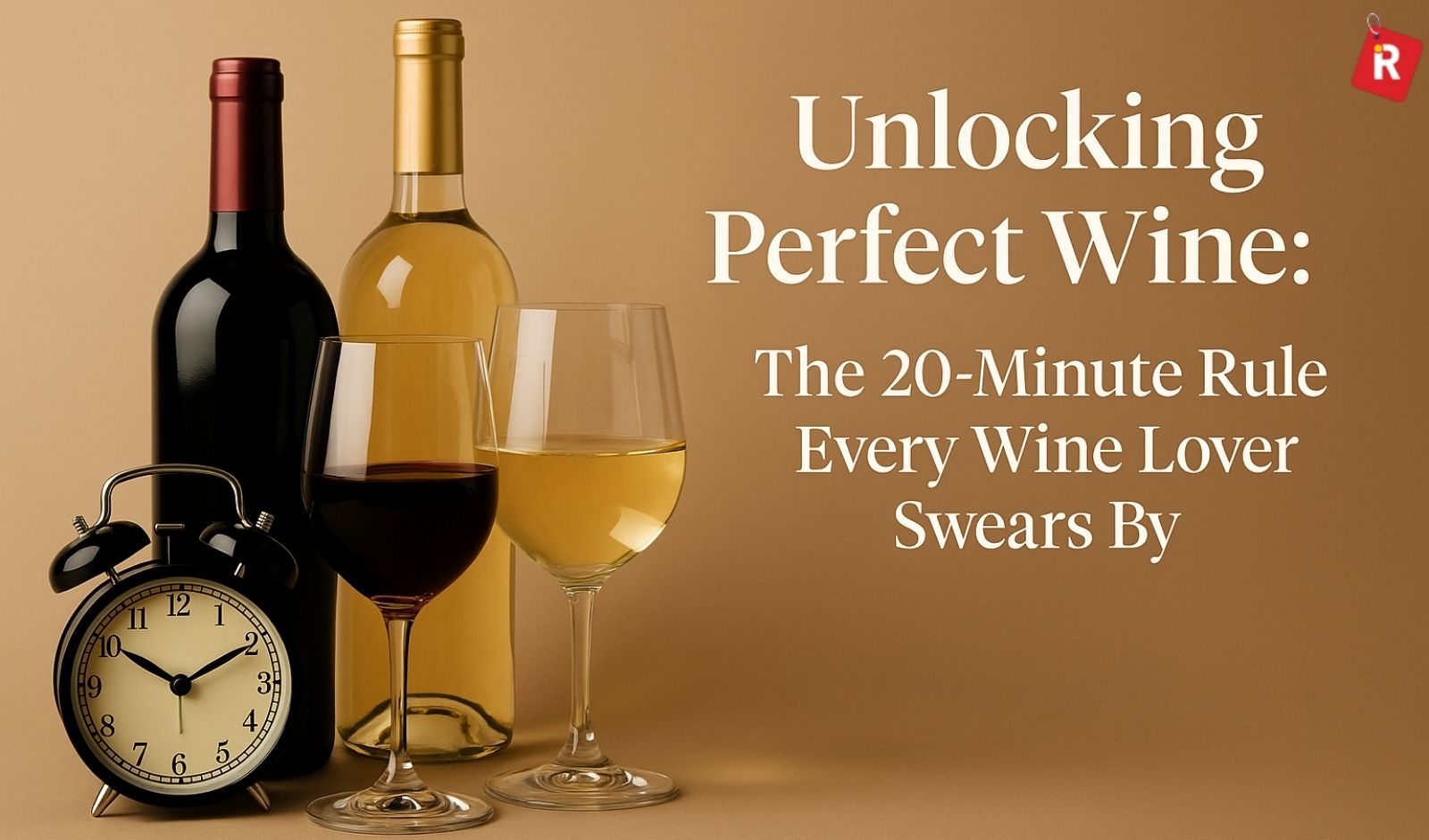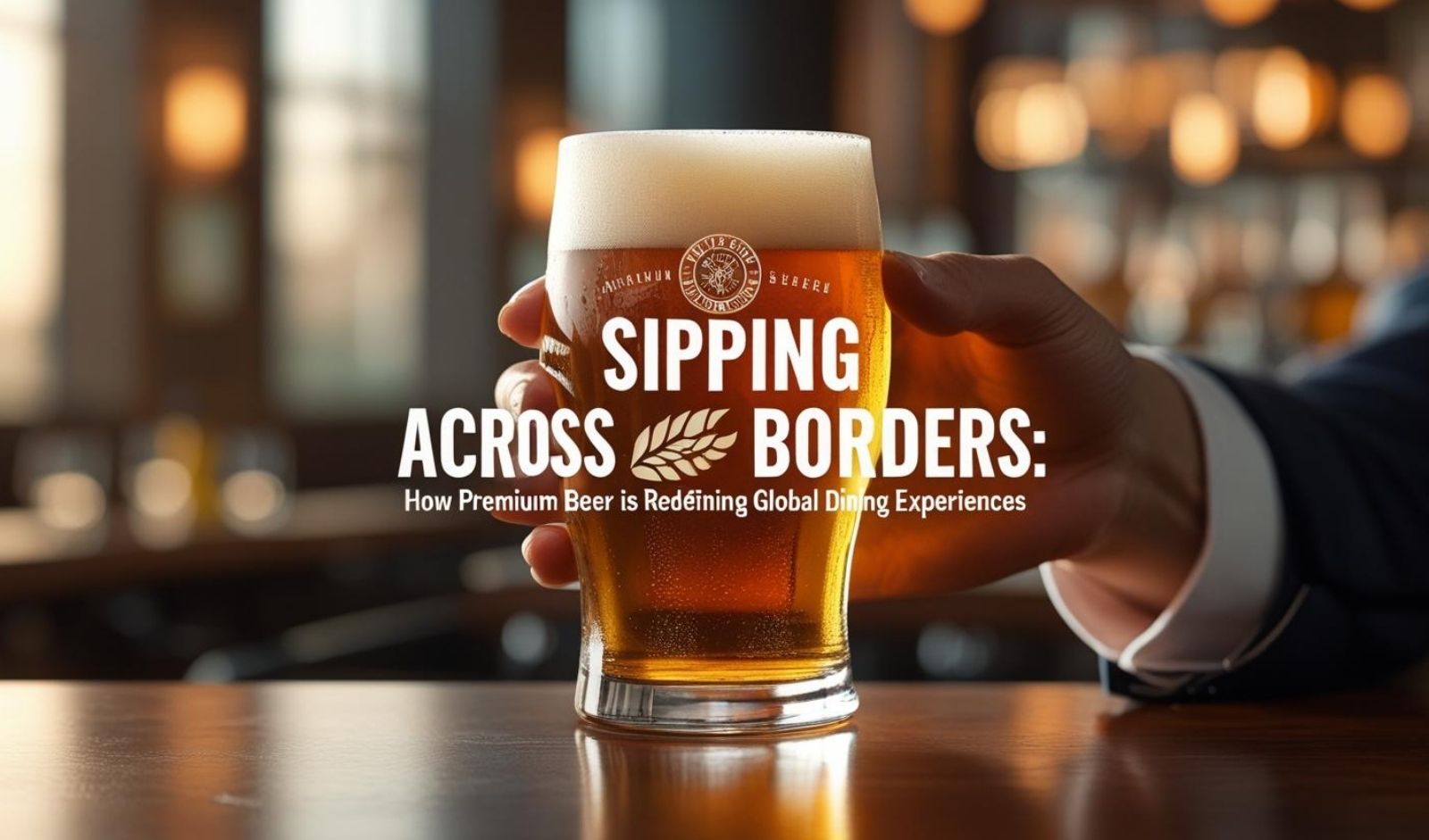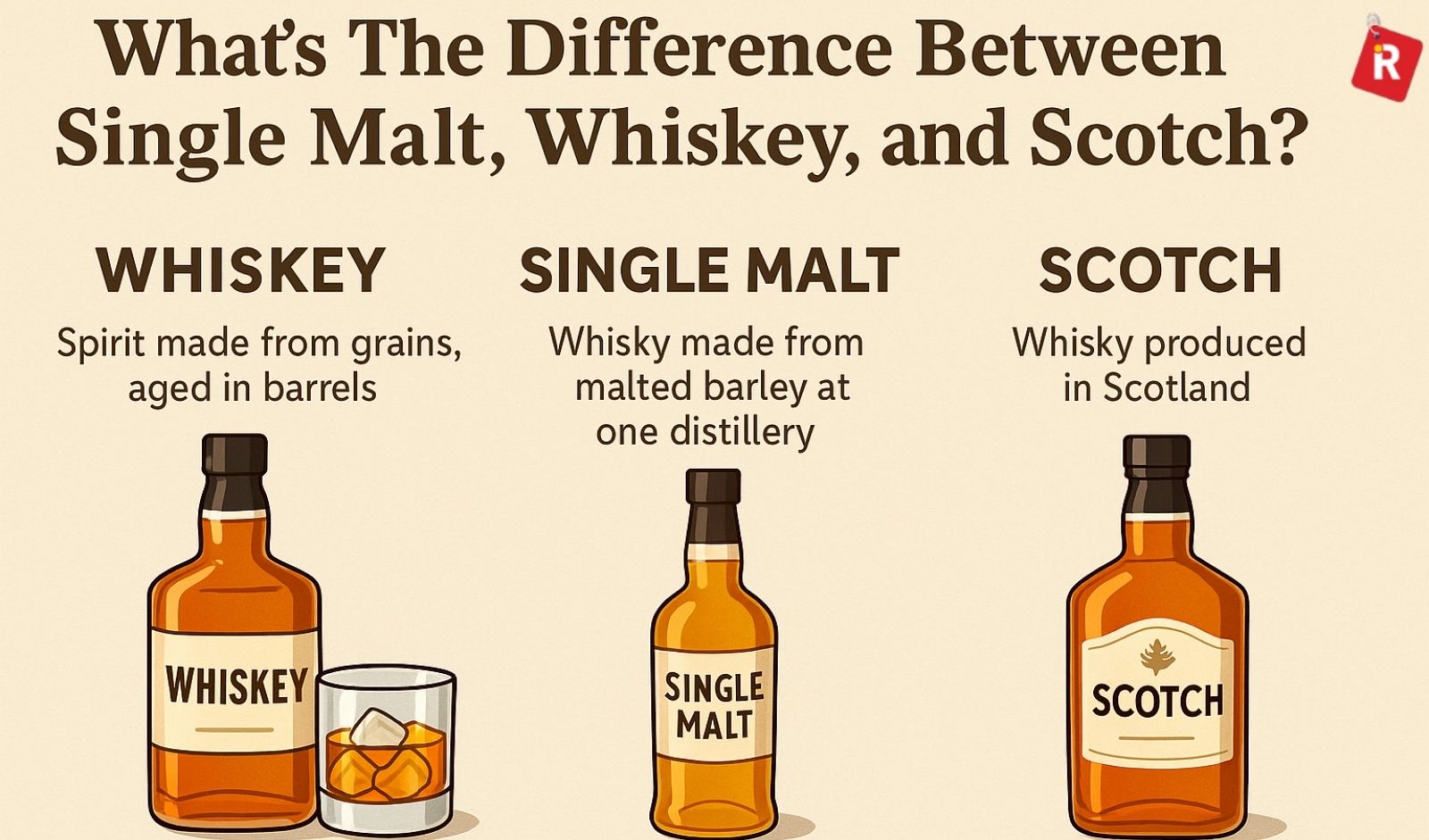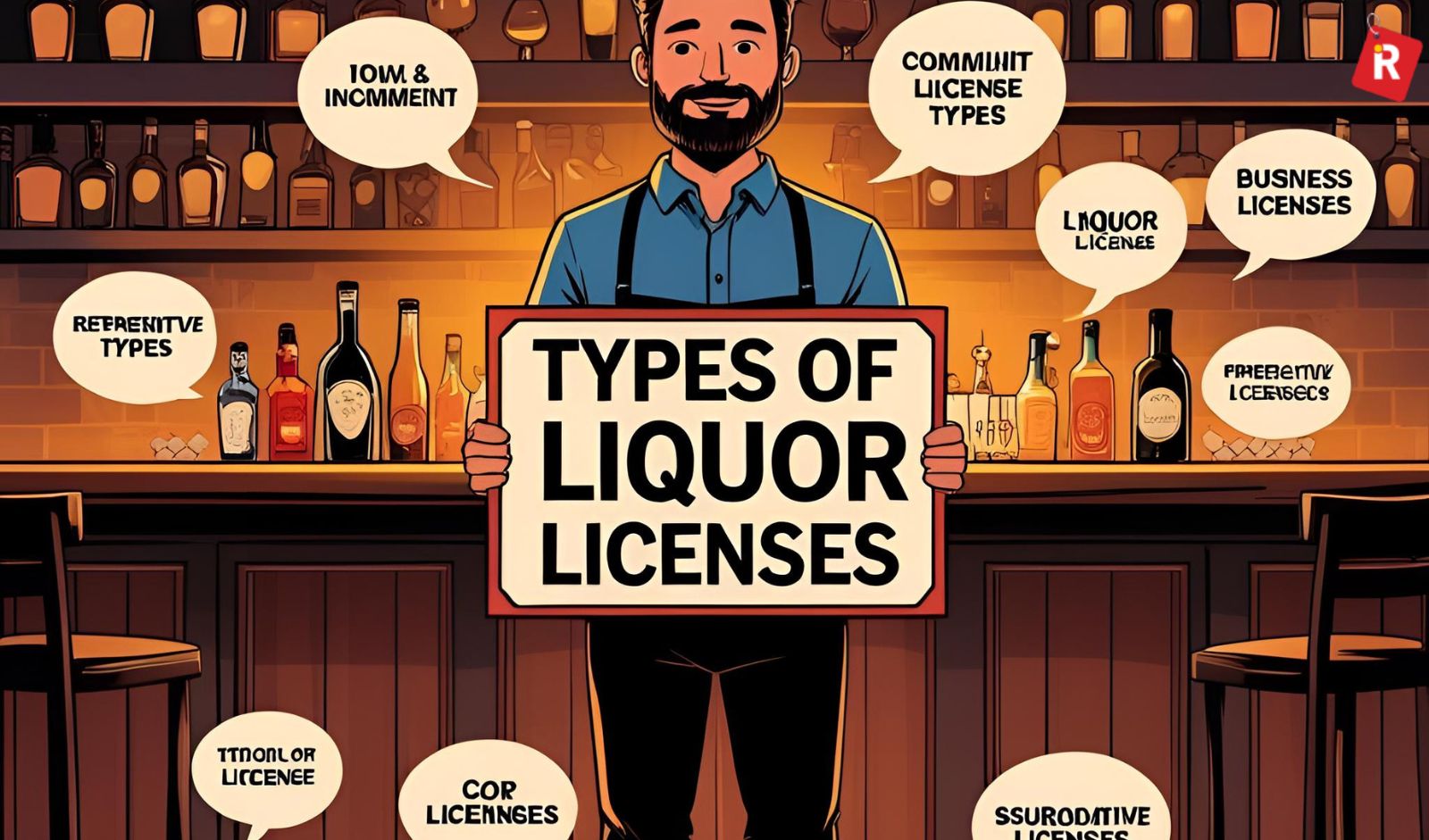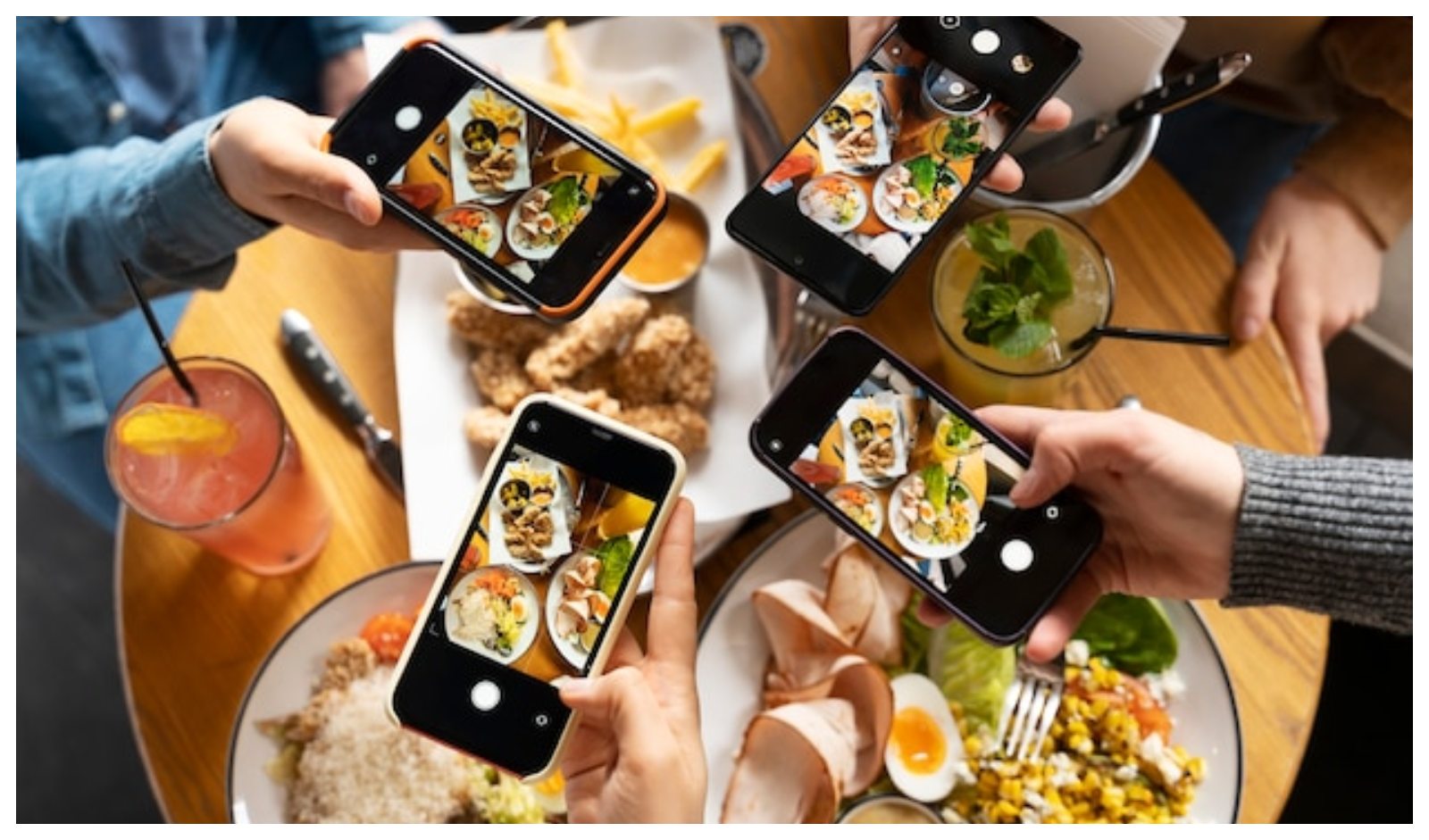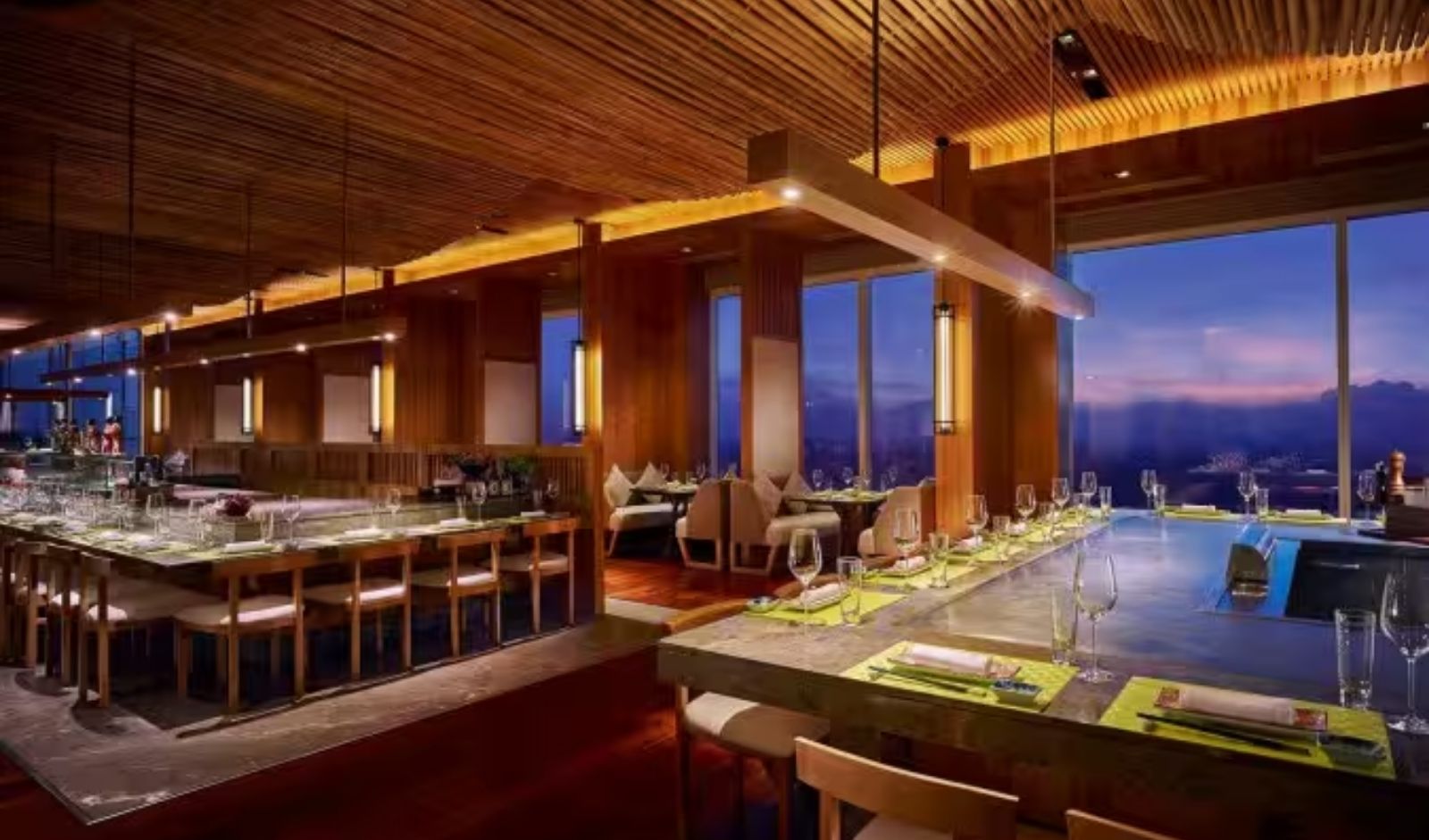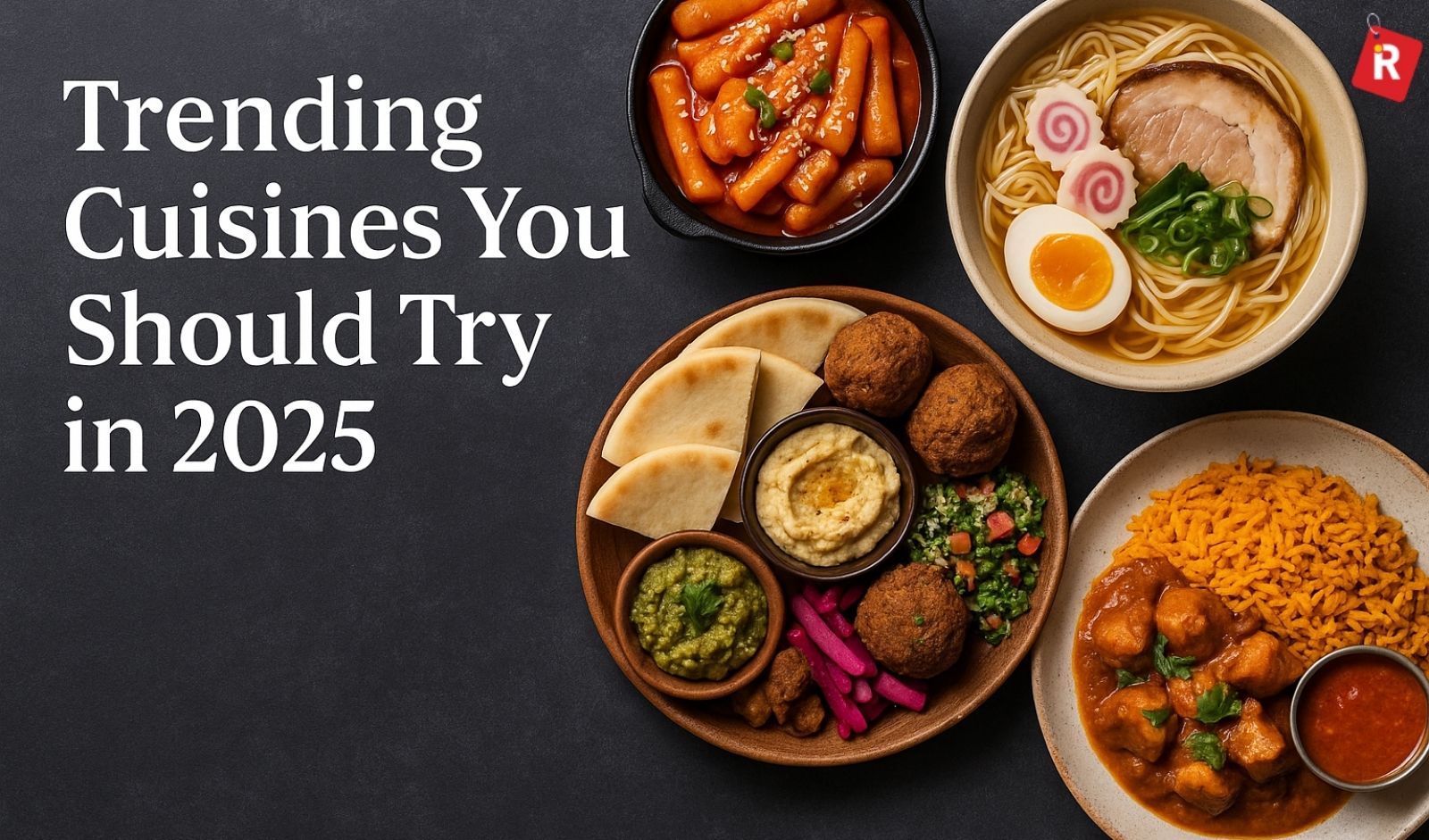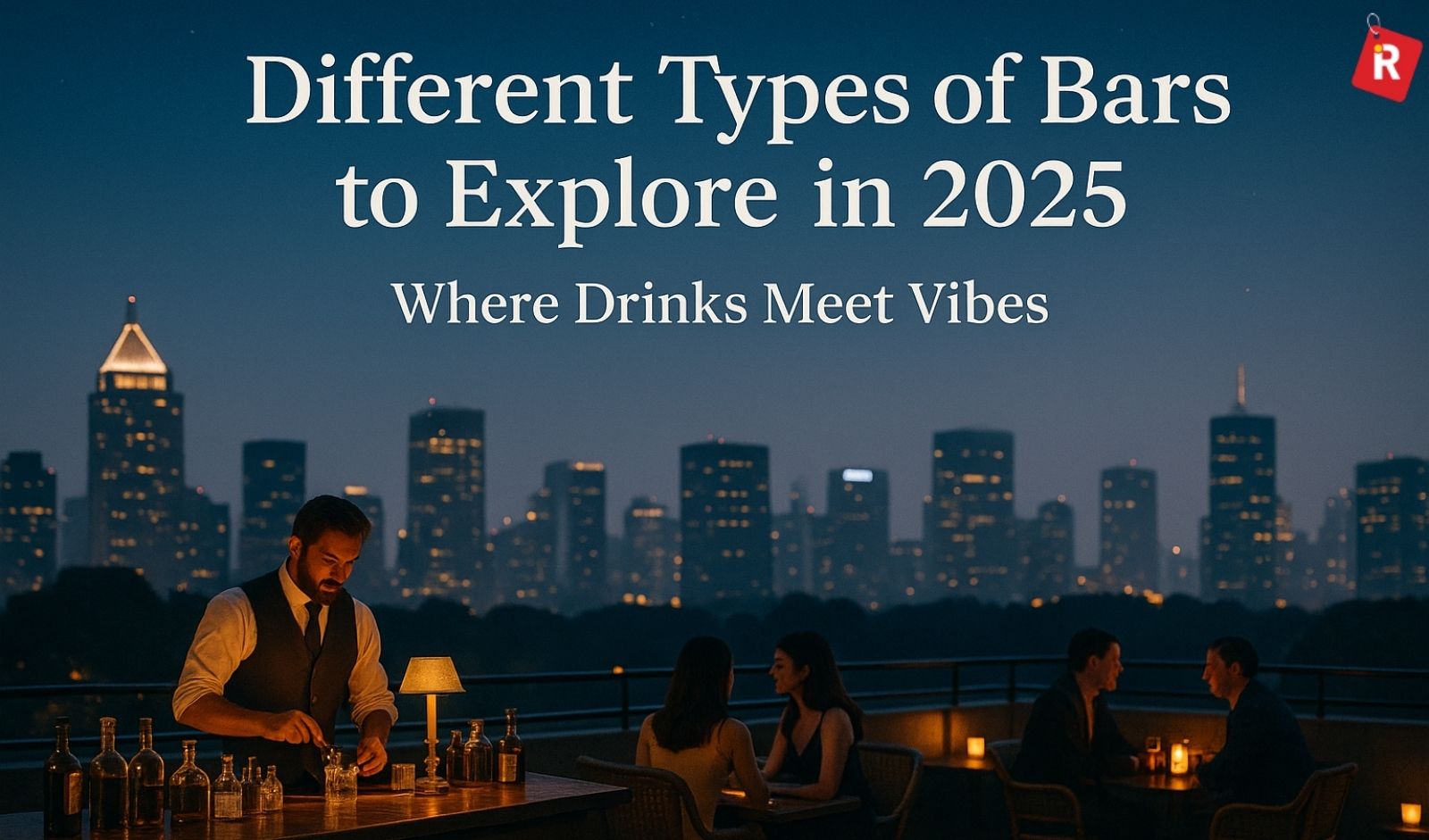
Serving wine is more than just pulling out a bottle and filling a glass. It is a small ritual that needs care. People who enjoy wine know that temperature changes everything. A good wine can taste dull if it is too cold. It can feel strong and heavy if it is too warm. This is why wine lovers talk about the 20-minute rule. It is a simple way to make wine taste better. If it is white wine, take it out of the fridge 20 minutes before drinking. If it is red wine, put it in the fridge for 20 minutes before drinking.
This little step helps wine reach a perfect balance. At this stage, flavors open up. The smell becomes richer. The taste feels smooth. Hosts use this trick at home to make guests happy. It does not need skill or fancy tools. It just needs a little time. This small habit makes a big difference every time a bottle is opened.
Read more: How to Pair Beer with Indian Food: A Desi Guide to Perfect Pints
9 Facts You Should Know About Beer
What is the 20-Minute Rule?
The 20-minute rule is a simple and easy guide that many wine lovers follow. It helps both red and white wine taste better. The idea is not complicated and can be done in any home. When it is time to serve white wine, the bottle should be taken out of the fridge 20 minutes before pouring. This allows it to warm slightly and open its flavors. For red wine, the opposite is done. The bottle is placed in the fridge for 20 minutes before serving. This cools the wine a little and makes it smooth.
This small step changes the taste in a clear way. The wine reaches the right temperature. Once it is poured, the smell becomes soft and the flavors stand out. The drink feels balanced and not strong with alcohol. People who follow this rule enjoy a better taste in every glass without any extra effort.
Why Temperature Matters
Wine is very sensitive to heat and cold. The way it is served changes how it tastes. Experts always say that temperature decides how a wine will smell and feel. The 20-minute rule is a simple way to find this balance. This simple rule helps bring the best out of a bottle. It is an easy step that makes wine more enjoyable at home.
- When wine is too cold, the flavors do not open. It feels flat and only the chill is noticed. The smell and taste stay hidden.
- When wine is too warm, the alcohol stands out. It feels strong and heavy on the tongue.
- Cooling red wine for a short time makes it fresh. It feels lighter and smoother in the mouth.
- Letting white wine sit out for a short time makes it soft. It helps the fruit and floral notes show up.
Common Mistakes People Make
Many people make simple mistakes when serving wine. These mistakes change how the wine tastes. Even a bottle of good wine will not feel special if it is served at the wrong temperature.
- White wine is often served too cold. It feels fresh but it hides all the flavors inside.
- Red wine is often left on the table for a long time. It becomes too warm and heavy.
- When wine is very cold, only the chill is noticed and the aroma is lost.
- When wine is very warm, the alcohol taste becomes strong and covers all other notes.
- A good bottle can taste flat if it is not served the right way.
- The temperature of wine is just as important as choosing a good bottle.
These small details decide how wine feels on the tongue. Care with temperature always makes wine better.
Know more: How to Pair Indian Food with the Right Alcohol: A Desi Guide to Perfect
Temperature Tango: When Wine Hits the Right Note
This little dance of 20 minutes makes a huge difference. When white wine warms up a little, you can smell fresh fruit, citrus, and floral notes. When red wine chills a little, you can enjoy cherry, berry, and spice.
This is the moment when wine truly opens up. It is like tuning an instrument before a performance. If you are hosting friends, this trick can make you look like a pro. You do not need a big wine cellar. You do not need an expensive cooler. Just follow the 20-minute rule. Your guests will notice the difference. It adds charm to a dinner table without any extra cost.
Also check: Types of Liquor Licenses: Which One Do You Need for Your Business?
Pairing Moments
Wine is not limited to fine dining or formal occasions. It is a drink that can be enjoyed in many simple and relaxed moments. The 20-minute rule makes these moments even better.
- A glass of red wine can be perfect with a simple meal like pizza or while watching a movie at home. It adds a smooth taste and makes the evening feel special.
- White wine can be enjoyed with a cheese board or a light salad, especially on a warm summer evening. The right temperature brings out its fresh taste.
- The 20-minute rule helps in every setting. It makes the wine balanced so that each sip feels soft and pleasant.
- Serving wine with care turns small moments into happy memories. It is an easy habit that makes a difference.
This rule shows that wine can fit into daily life and not just formal dinners.
Quick Tips If You Do Not Have a Thermometer
- If red wine feels warm to your hand, chill it a bit before pouring.
- If white wine feels too cold, just leave it on the counter for a short time.
- Use an ice bucket for quick chilling. Add water and ice, and dip the bottle for a few minutes.
These small steps are enough to get close to the perfect temperature.
Check more: Wine vs Beer: What Sets Them Apart (And What Your Tastebuds Say About You)
Restaurant India News: Oaksmith Raises the Bar in Indian Whisky with New
Radico Khaitan Bets on Premium Vodka with The Spirit of Kashmyr Launch
The Golden 20 That Makes Every Sip a Story
Wine is not only a drink. It is a ritual. The 20-minute rule is part of that ritual. It slows you down. It makes you wait. And when you finally pour, the wine tastes as it should.
Next time, try it. Remove white wine from the fridge 20 minutes before. Chill red wine for 20 minutes. You will taste the difference in the very first sip.
Closing Thoughts
Wine becomes more enjoyable when it is served in the right way. A simple step can change the way it tastes. The 20-minute rule is one such step. It helps every bottle show its best taste. This habit is easy to follow. It does not need any training or expert tools. It only needs a little care and a watch on time. The small wait before serving lets the wine breathe. It also brings the drink to the right temperature.
People who follow this step notice the difference in every glass. The smell becomes softer and the taste becomes smooth. From now on, this can be a simple wine habit. It makes every sip better and turns a normal drink into an experience worth enjoying.

Whisky is more than a drink. It is a story told through every drop. Each bottle carries a part of its land. It holds the work of people who made it with care. It speaks of old traditions and long years in wooden barrels. For someone new, whisky can seem complex. There are many types, many names, and many tastes. Each type is different. The way it smells, the way it feels, the way it warms the throat. Those who already enjoy whisky know there is always more to learn. A new region. A new style. A new barrel that gives a different taste.
Whisky comes from many countries. Scotland, Ireland, America, Japan, Canada, and India each make it in their own way. The grain, the water, and the air of the place make the drink unique. For some, whisky is a quiet companion. For others, it is a drink to share. Every glass tells a story. Every sip shows why it is worth trying.
Read more: Unlocking Perfect Wine: The 20-Minute Rule Every Wine Lover Swears By
How to Pair Beer with Indian Food: A Desi Guide to Perfect Pints
A Golden Sip of History
Whisky has been crafted for hundreds of years. It began as a way to store and use grains but slowly turned into a drink for quiet evenings, joyful gatherings, and moments of thought. Today, it is made across the globe. Every region gives its own character to the drink, shaped by its soil, grains, water, and barrels.
One of the finest parts of whisky is how it lets you taste different places in a single glass. A Scotch carries the cool, misty spirit of Scotland. Bourbon brings the warm, rich taste of Kentucky. Japanese whisky reflects the care and precision of Japan. It is a journey that needs no travel. Open a bottle, and the world comes to you.
1. Scotch Whisky – Scotland’s Liquid Poetry
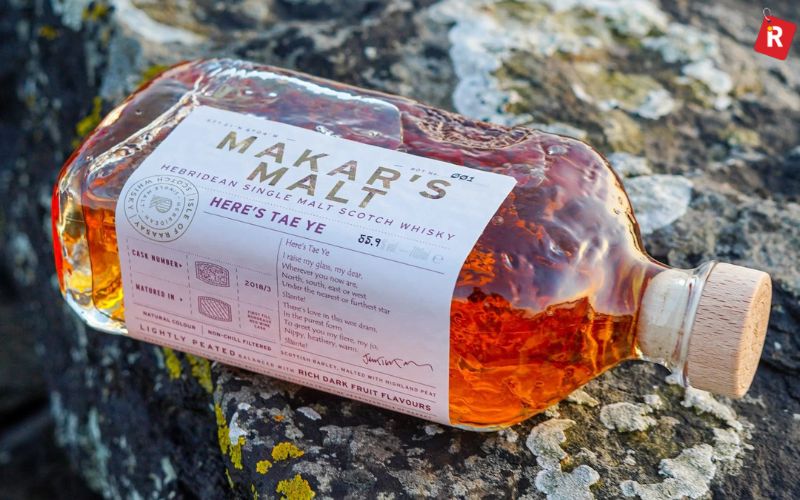
When people think of whisky, they often think of Scotland. Scotch is rich, bold, and full of character. It is made mostly from malted barley and aged for at least three years. There are two main kinds. Single malt is made from malted barley in one distillery. It is complex, full of flavor, and best enjoyed slowly. Blended Scotch is a mix of different malts and grains. It is smoother and easier to drink.
The taste depends on the region. Speyside whiskies are sweet and fruity. Islay whiskies are smoky and peaty. Highlands whiskies have a little bit of everything. Famous Scotch brands include Glenfiddich, Laphroaig, Macallan, and Johnnie Walker.
2. Irish Whiskey – Smooth Operator
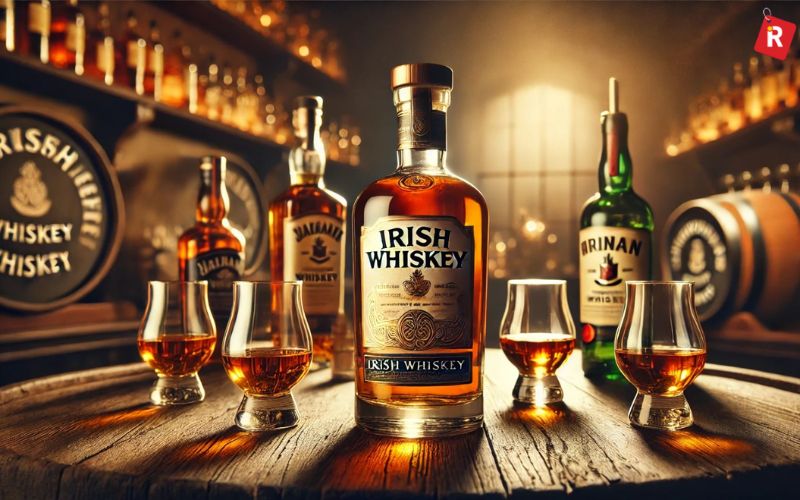
Irish whiskey is famous for its smooth taste. This comes from triple distillation, a method that makes it gentle and light. It is a good choice for those who are just starting to drink whisky.
You will taste honey, soft fruit, and a touch of spice. Brands like Jameson, Redbreast, and Teeling show how elegant Irish whiskey can be. You can drink it neat or mix it into a cocktail.
Know more: 9 Facts You Should Know About Beer
Oaksmith Raises the Bar in Indian Whisky with New Premium Expression ‘Nagomi’
3. Bourbon – America’s Sweet Rebel
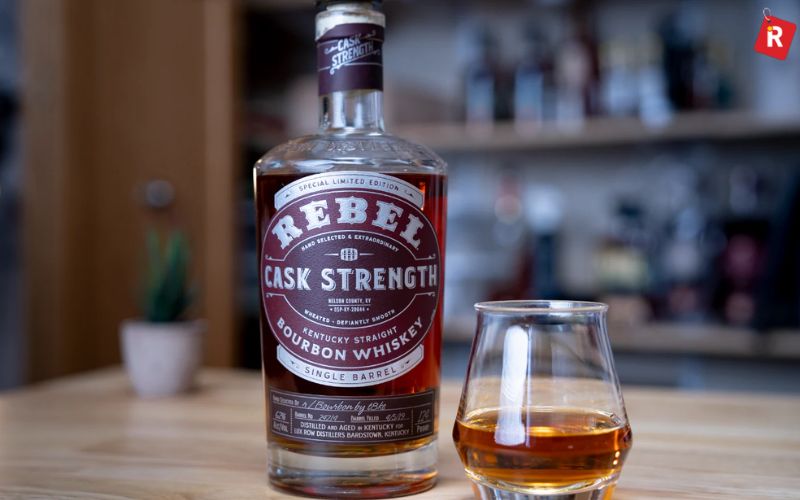
Bourbon is the pride of the United States. By law, it must be made from at least 51% corn. This gives bourbon a sweet, round taste. It often has notes of caramel, vanilla, and oak.
The best bourbons come from Kentucky. They are bold but friendly. Try classics like Maker’s Mark, Woodford Reserve, or Buffalo Trace. Bourbon is great neat, on the rocks, or in a simple cocktail like an Old Fashioned.
4. Japanese Whisky – The Zen of Sipping
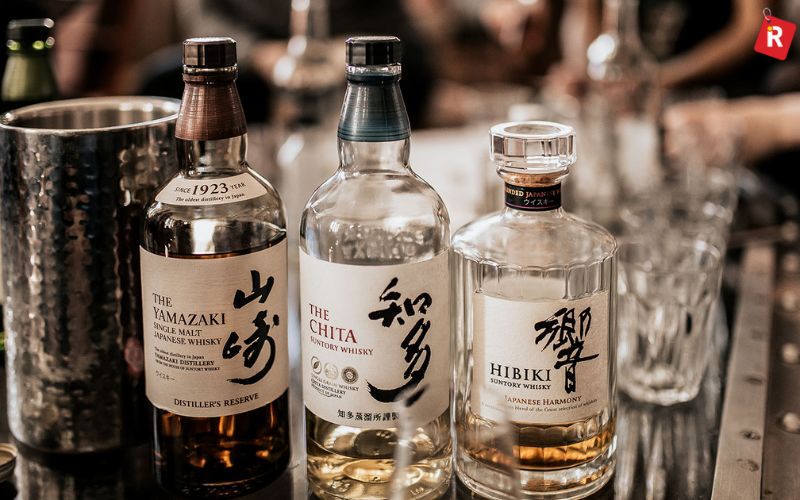
Japanese whisky is known for balance and detail. It takes inspiration from Scotch but has its own style. These whiskies are often smooth, delicate, and very refined.
Craftsmanship is at the heart of every bottle. The makers focus on harmony. This makes Japanese whisky a favorite around the world. Brands like Yamazaki, Hibiki, and Nikka are excellent choices. They are often enjoyed neat to appreciate every layer of flavor.
5. Canadian Whisky – The Polite Pour
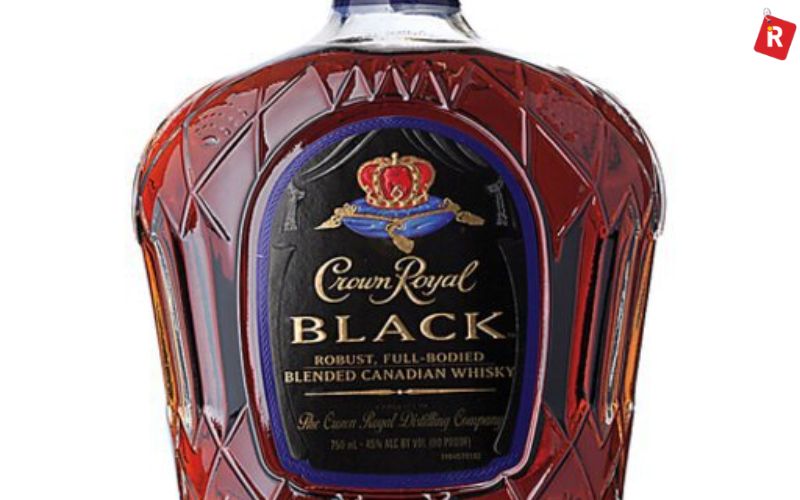
Canadian whisky is easy to drink. It is lighter than other types. Many Canadian whiskies use rye, giving them a soft spicy edge. These whiskies are often used in cocktails but can also be enjoyed on their own.
Crown Royal and Canadian Club are two of the most famous brands. If you prefer a gentler taste, Canadian whisky is a good place to start.
6. Rye Whiskey – Spicy and Bold

Rye whiskey has a strong character. It has a dry, spicy taste that stands out. This makes it popular with mixologists for cocktails like the Manhattan.
American rye whiskey must be made from at least 51% rye grain. The result is sharp and lively. It is a good choice for someone who wants more punch than bourbon.
7. Indian Whisky – Homegrown and Proud
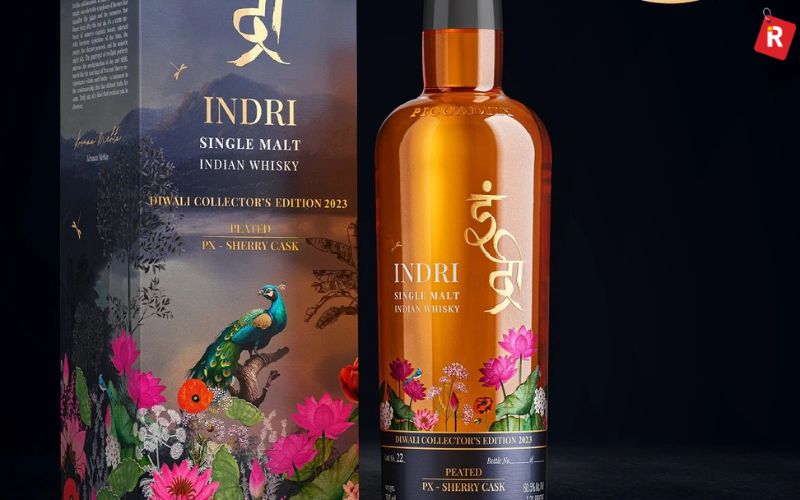
India is one of the biggest whisky markets in the world. For a long time, Indian whiskies were not well known outside the country. That has changed. Premium Indian whiskies are now winning awards globally.
Brands like Amrut and Paul John make single malts that stand shoulder to shoulder with Scotch. These whiskies often have tropical fruit and spice notes, shaped by India’s warm climate.
Also check: Top Alcohol Brands to Try This Summer in India
How to Pair Indian Food with the Right Alcohol: A Desi Guide to Perfect
A Flavor Rollercoaster in a Glass
The world of whisky offers a wide range of tastes. Some whiskies carry a smoky and earthy note. Others feel soft, sweet, or even spicy. The kind of grain, the barrel used, and the years it spends inside the cask shape these flavours. It is a slow craft. For anyone who wants to know whisky better, tasting different types is the best way to start.
- Start with gentle whiskies. Light ones help the drinker know the taste without feeling heavy.
- After that, move to rich flavours. Whiskies with more age or more oak have deep character.
- Then try smoky styles. These have bold taste and leave a strong mark on the tongue.
- Each sip tells something new. It helps a person find the taste that feels right.
Why Whisky Is the New Cool for Everyone
For many years whisky was seen as a drink for older men. It was linked with slow evenings and leather chairs. That picture has changed. Now a new crowd is picking up the glass. Young people are trying whisky. Women are finding a place in the world of whisky too. New drinkers are curious to learn about it.
Bars that focus only on whisky have become common in cities. These places let people taste and talk. Events and tastings are now a part of the culture. People meet, share a table, and try different styles. Whisky is no longer a quiet drink for a small group. It is a drink that brings friends together. A bottle can be opened at a party, a dinner, or a small meeting at home. It is now about stories, fun, and simple moments. Whisky has become a drink for everyone.
Check more: Wine vs Beer: What Sets Them Apart (And What Your Tastebuds Say About You)
Best Smooth Whisky Brands in India That Go Down Like Velvet
The ABC of Whisky: Aroma, Balance & Character
Learning to enjoy whisky is not difficult. It is slow and simple. The right way makes the drink taste better and gives a fuller experience.
- The first step is to smell it. The aroma shows what is inside the glass. A good whisky will smell rich and layered. A light sniff tells a lot before even taking a sip.
- The next step is to taste it slowly. Take a small sip and let it rest on the tongue. The flavors open one by one. There may be sweet notes, a touch of spice, a bit of smoke, or a smooth warmth.
- The last step is to take time. Whisky is not for quick drinking. It is better to pour a little, sit back, and enjoy it without hurry.
A good whisky has balance and character. It invites another sip without being harsh. This is how it was meant to be enjoyed.
Closing Thought
Whisky is a journey that never ends. Each type has its own taste and its own story. No two bottles are ever the same. A Scotch speaks of mist and peat. An Irish whiskey is soft and smooth. Bourbon is bold and sweet. Japanese whisky shows care and detail. Canadian whisky is gentle. Rye is spicy and full of life. Indian whisky carries warmth and spice from its land.
There is something for everyone. It takes time to know these drinks. Each glass adds to the experience. Those who enjoy whisky often keep trying new ones. They explore, compare, and slowly learn what they like most. The best part is finding one that feels right. Whisky rewards patience. It asks for respect. And it is best enjoyed slowly and with care.

Today, premium beer is no longer just a beverage—it is an experience, a culinary companion, and a symbol of refined taste. The momentum behind premium beer is unmistakable. According to analysis from Future Market Insights, the premium lager category is projected to grow at a CAGR of 5.7 percent from 2025 to 2035, reaching a market value of $209.1 billion by 2035. This trend reflects a growing interest in premium products that align with evolving consumer lifestyles.
Analytics from IMARC Group recently showed that the beer market in India is forecast to grow at a CAGR of 6.72 percent from 2025 to 2033, reaching Rs 802.5 billion by 2033.
This growth is being driven by rising disposable incomes, rapid urbanisation, and a cultural shift that embraces social drinking. A new wave of consumers, especially millennials, is prioritising premium beverages that offer bold flavours, refined quality, and a cleaner drinking experience. As tastes evolve, premium beers with character and depth are becoming increasingly popular in modern dining and lifestyle settings.
The global appreciation for premium beer is undergoing a quiet transformation; not just in terms of what we drink, but how we drink it. Its malt-forward body and crisp bitterness offer just the right balance to work across cultures, from the smoky richness of American BBQ to the sharp umami of Japanese tempura, or the peppery heat of Thai green curry. With European staples like fish and chips or duck confit, it cuts through fat and enhances texture, turning familiar plates into something more memorable.
But perhaps nowhere is beer’s culinary role more exciting than in India, where diverse regional flavours, from tandoori spices to creamy gravies, demand a beverage that can keep up. Here, premium strong beer provides the ideal bridge between bold seasoning and refined refreshment. What makes this shift so significant is that it reflects a broader global trend: consumers, especially in emerging markets like India, are now seeking high quality, full bodied drinks that match their increasingly sophisticated food choices. Beer is not just joining the meal, it is becoming part of the culinary dialogue.
Even in kitchens, strong premium beer is gaining traction. It is being used in global recipes as a tenderiser, a fermenting agent, a base for batters, to enrich sauces, and even to add complexity to desserts. From American beer battered fish to Mexican beer braised pork, the ingredient is as adaptable as it is flavourful.
As the world grows more interconnected, so do our palates. Today’s drinkers are just as likely to enjoy Korean bulgogi or Mediterranean grilled seafood as they are traditional fare. Strong, well-crafted beer deserves to be part of those experiences, not just in a bottle, but as an integral part of the plate. We do not just brew beer; we craft bold, flavour driven experiences with the ambition to one day complement meals across cultures and beyond borders. The age of beer as a global culinary companion is here, and premium beers are leading the way.

By- Tarun Bhargava, Co-Founder & CEO of Proost

Many people have stood in front of a bar menu, puzzled by the terms whiskey, single malt, and scotch. These names are often used casually, but each one has a distinct meaning rooted in tradition and technique. Understanding these terms can make choosing a drink much easier and more enjoyable.
Whiskey is a broad category of spirit made from grains, distilled, and aged in wooden barrels. Single malt is a specific type of whisky, made only from malted barley at a single distillery, known for its depth and craftsmanship. Scotch, on the other hand, refers to whisky that is produced in Scotland and follows strict rules about ingredients, process, and aging. These differences are not just technical but also influence the taste, aroma, and experience of the drink. Learning about them helps one order confidently, knowing what to expect from each option. It also adds a touch of knowledge and charm when sharing a drink with friends, turning a simple choice into a story worth telling.
Read more: How to Pair Beer with Indian Food: A Desi Guide to Perfect Pints
9 Facts You Should Know About Beer
Whiskey 101: The Big Umbrella
Whiskey, sometimes spelled whisky, is a well-known distilled spirit made from grains such as barley, corn, rye, or wheat. The process begins by mashing the grains, fermenting the mixture, distilling it, and then aging the spirit in wooden barrels, which gives it its distinctive color and flavor. It is an umbrella term that covers many varieties, including single malt and scotch. While all single malts and scotch are types of whiskey, not every whiskey qualifies as single malt or scotch. The differences come from how and where it is produced, the grains used, and how it is aged.
One interesting detail about whiskey is the variation in its spelling. In Scotland, Canada, and Japan, it is commonly written as “whisky.” In Ireland and the United States, however, it is spelled “whiskey.” Both spellings are correct and reflect the traditions of the regions where it is made, adding to the spirit’s rich cultural history.
What Makes a Single Malt So Special?
Single malt is a distinct and celebrated type of whisky known for its purity and character. It is made using only malted barley as the grain and is produced entirely at one single distillery. The traditional method of distillation in copper pot stills ensures a rich and authentic flavor that reflects centuries of craftsmanship.
Every distillery produces a single malt with a flavor unique to its environment. The taste is shaped by the local water, the type of oak barrels used for aging, the climate, and even the air of the region. This is why no two single malts are exactly alike, and why they are prized by enthusiasts around the world. Single malt offers a layered, complex experience that appeals to those who appreciate depth and subtlety in a drink. For anyone interested in exploring the artistry of whisky, single malt is always a rewarding choice.
Scotch: The Pride of Scotland
Scotch is a type of whisky that comes exclusively from Scotland and follows strict regulations to earn its name. It is crafted with care, tradition, and attention to detail that set it apart from other whiskies around the world. Here are three important aspects to understand about scotch:
- To be called scotch, the whisky must be produced and matured in Scotland. It must also be aged in oak barrels for a minimum of three years. This aging process gives scotch its depth and complexity.
- Scotch can be made entirely from malted barley, which is called single malt, or from a combination of grains, known as blended scotch. Both styles offer unique flavors and appeal to different palates.
- The taste of scotch often reflects the region it comes from. Some areas are known for producing light and sweet varieties, while others create bold, smoky, or peaty styles that showcase Scotland’s diverse landscapes and traditions.
Know more: How to Pair Indian Food with the Right Alcohol: A Desi Guide to Perfect
Difference Table: Single Malt vs Whiskey vs Scotch
| Feature | Whiskey (General) | Single Malt | Scotch |
|---|---|---|---|
| What it is | Distilled spirit from grains, aged in barrels | A type of whisky made from malted barley at one distillery | Whisky made in Scotland under strict rules |
| Grain used | Barley, corn, rye, or wheat | 100% malted barley | Usually malted barley can be blended with grains |
| Distilleries | It can come from many distilleries | Comes from one single distillery | Must be made in Scotland |
| Aging requirements | Varies by country | Usually aged at least 3 years | Minimum of 3 years in oak barrels |
| Flavor profile | Depends on grain and barrel | Rich, layered, crafted flavors | Often smoky, peaty, bold |
| Where it’s made | Worldwide | Mostly Scotland, but also elsewhere | Only in Scotland |
From Grain to Glory
The choice of grain is what sets whiskey styles apart.
- Barley gives rich, malty flavors.
- Rye adds spice.
- Corn makes it sweet and smooth.
- Wheat offers a soft, light profile.
Knowing the grain helps you choose the right whiskey for your palate.
Also check: Is Beer Good for Your Health? Here's the Truth You Should Know
Barrel Magic
Whiskey owes much of its character to the barrel it matures in. The type of wood and the barrel’s history play a big role in shaping its color, aroma, and taste. Here are three key points to understand:
- The wood of the barrel infuses the spirit with rich flavors and gives it its distinctive golden or amber color. Over time, the whiskey absorbs notes of spice, caramel, and smoke from the charred interior.
- Scotch is often aged in barrels that once held sherry or bourbon. This adds layers of sweetness, fruitiness, and sometimes a soft vanilla finish to the final drink.
- Single malt whisky highlights more of the oak’s natural influence and delivers subtle, clean flavors because it’s crafted from a pure, traditional recipe.
Check more: Wine vs Beer: What Sets Them Apart (And What Your Tastebuds Say About You)
The Most Overrated Beer Styles: Are They Really Worth the Hype?
Scotland vs. The World
Whiskey is made around the world, but each region adds its own twist.
- Scotland: Smoky, peaty, dry scotch.
- Ireland: Smooth, triple-distilled, lighter whiskey.
- USA: Sweet bourbons and spicy rye.
- Japan: Delicate, refined whiskies with balanced flavors.
Scotch stands out for its stricter rules and stronger flavors.
Sip The World
By understanding these differences, one can make better choices and truly enjoy the world of whiskey. Whether at a bar or browsing a store, knowing the distinctions helps in picking the right bottle that matches one’s taste. A smooth Irish whiskey, a bold scotch, or a refined single malt — each has its own charm. Taking the time to learn about grains, barrels, and regions makes the experience more rewarding. For someone just starting out, it can feel overwhelming, but even a little knowledge goes a long way. Exploring whiskey becomes not just about drinking, but about appreciating the craft behind it. For those interested, a simple tasting guide or a list of affordable, quality bottles can make the journey even more enjoyable and confident.

Thinking of starting a bar, restaurant, liquor store, or any retail business that sells alcohol in India? Then, a proper liquor license is not just a requirement—it’s essential. This official document gives you legal permission to sell, serve, or distribute alcoholic beverages. Without it, your business could face heavy penalties, legal trouble, or even a complete shutdown. But getting a liquor license isn’t as straightforward as it seems. India has various types of liquor licenses, and the right one depends on your business model. Whether you want to run a high-end bar, a small retail wine shop, or serve alcohol at a temporary event, there's a specific license for it.
Each state has its own rules, fees, and application processes. So, understanding the types of licenses is key before you apply. Some licenses are for on-premise consumption, others are for takeaway and retail, and some are only valid during events. In this guide, we’ll break down the different types of liquor licenses in India and help you figure out which one fits your business best.
Read more: 12 Delicious High-Protein Foods to Eat Daily for a Healthier You
Why Do You Need a Liquor License?
A liquor license protects both you and your business. It’s a legal permit from the state government that confirms you’re allowed to sell, serve, or distribute alcohol. This license isn’t just a formality—it’s a critical step in operating a lawful alcohol business in India. It also helps the government regulate the industry. With a license, the state can monitor alcohol sales, apply the correct taxes, and control illegal trade or black-market supply. Whether you’re running a full-scale bar or hosting a one-time event with alcohol, you need the proper license in place. Operating without one is risky. Even if you’re just serving drinks at a wedding or private party, doing so without a license is considered illegal.
Know more: 9 Facts You Should Know About Beer
How to Pair Indian Food with the Right Alcohol: A Desi Guide to Perfect
The Main Types of Liquor Licenses in India (Delhi-Based Classification)

In India, liquor licenses are controlled by state excise departments. That means the license names and rules can change from state to state. Below is a list of liquor licenses that are mostly used in Delhi. Each one is linked to a specific type of alcohol business.
1. L-1 License – Wholesale Liquor License
The Wholesale Liquor License is meant for businesses that import, manufacture, or distribute alcoholic beverages in bulk to retailers like bars, hotels, or wine shops. If you’re planning to enter the supply chain side of the liquor industry—rather than sell directly to customers—this is the license you’ll need. It allows you to legally stock and sell alcohol in large quantities to licensed vendors, not individuals. It's essential for anyone running a distribution hub or liquor wholesale operation in India.
Who needs it: Manufacturers and large distributors.
2. L-6 License – Retail License for Indian Liquor and Beer
The Retail Liquor License for IMFL is issued to government-approved or private liquor shops that sell Indian-Made Foreign Liquor (IMFL) and beer directly to consumers. This license permits over-the-counter sales but does not allow the sale of directly imported foreign liquor. It’s ideal for wine shops, beer shops, or retail outlets focusing on domestic alcoholic beverages. Businesses must comply with state regulations and display the license prominently at the premises to ensure transparency and legal operation.
Who needs it: Retail liquor shops.
3. L-9 License – Private Retail Liquor Shop License
If you’re planning to open a private liquor store that sells foreign liquor and beer, you’ll need a license specifically meant for private retail operations. This license allows you to stock and sell imported alcoholic beverages to individual customers for off-premise consumption. It’s different from licenses granted to government-run stores and comes with its own set of rules, fees, and regulations depending on your state. This license ensures that your store operates legally and meets all compliance standards. Without it, selling foreign liquor or beer can lead to legal trouble, heavy fines, or permanent closure of your retail outlet.
Who needs it: Private wine shops and retail liquor outlets.
4. L-10 License – Departmental Store Liquor Sale
This license is meant for upscale departmental stores that wish to sell bottled liquor alongside groceries, gourmet foods, and household items. It allows such stores to offer a wider range of products to customers under one roof. However, to qualify, the store must meet specific criteria, such as having a minimum floor area, proper storage facilities, and security measures in place. The license helps maintain regulation while catering to a more premium customer base. It's ideal for large-format retail chains or supermarkets aiming to offer a full-service shopping experience, including alcohol, in compliance with state liquor laws.
Who needs it: Supermarkets or hypermarkets like Spencer’s, Modern Bazaar.
5. P-10 License – Temporary License for Private Parties
Hosting a private party at home, a banquet, or a wedding event and want to serve alcohol? You’ll need a P-10 license. This is a one-day permit issued by the state excise department that legally allows you to serve liquor at private gatherings. It’s ideal for birthdays, anniversaries, or family functions where alcohol is offered to guests but not sold. You can apply for it online or at your local excise office, and it’s usually approved quickly if all details are correct. This simple license keeps your event fun, legal, and stress-free—without risking any fines or legal trouble.
Who needs it: Individuals hosting parties or weddings.
6. P-13 License – Temporary License for Large Events
The P-13 license is issued for large-scale public or commercial events such as concerts, festivals, exhibitions, or corporate parties where alcohol will be served. It is a short-term permit, typically valid for one or two days, and is granted by the state excise department. This license is essential if you plan to serve liquor at ticketed or sponsored events. Applicants must provide event details, venue permissions, crowd estimates, and security arrangements. Without this license, serving alcohol at a public gathering is illegal and can result in fines or cancellation. It ensures your event remains compliant and professionally managed.
Who needs it: Event planners or businesses organizing short-term public events.
7. L-15 License – Hotel Liquor Service License
The Hotel Liquor License is required for hotels that wish to serve alcohol exclusively to their in-house guests. This license permits the hotel to offer alcoholic beverages through room service, mini-bars, or designated lounges, but not to walk-in customers or the general public. It's ideal for boutique hotels, resorts, or business accommodations that want to enhance guest experience while staying legally compliant. The license is granted by the state excise department and often requires the hotel to meet specific criteria, such as star ratings or room capacity. This ensures controlled alcohol service within the premises while maintaining legal boundaries.
Who needs it: 3-star, 4-star, or 5-star hotels.
8. L-16 License – Hotel Bar License
The L-16 License, also known as the Hotel Bar License, allows hotels to serve alcoholic beverages in a dedicated bar or restaurant area within their premises. This license is not limited to in-house guests—it permits service to walk-in or non-resident customers as well. It’s ideal for hotels that want to operate a public bar, lounge, or fine-dining restaurant offering liquor. Issued by the state excise department, the L-16 license typically requires the hotel to meet specific criteria, such as star classification, safety norms, and proper infrastructure. It’s essential for hotels looking to run a full-scale hospitality business with licensed alcohol service.
Who needs it: Hotels with walk-in bars or restaurants.
9. L-17 License – Restaurant Liquor License
If your restaurant plans to serve wine, beer, or hard liquor along with meals, you’ll need a Restaurant Liquor License. This license allows you to serve alcohol only when food is also being ordered. To qualify, your establishment must have a fully operational kitchen and meet the minimum seating capacity defined by your state’s excise department. It’s essential for dine-in restaurants aiming to offer a complete food and beverage experience while remaining legally compliant with local liquor laws.
Who needs it: Fine-dining restaurants, lounge bars, or casual dining chains.
10. L-18 License – Club License
The L-18 License, commonly known as the Club License, permits registered clubs to serve alcohol exclusively to their members. These clubs must be officially registered under the Societies Registration Act or similar legislation. This license does not allow the sale of alcohol to the general public or non-members. It is typically granted to social, cultural, or sports clubs that offer hospitality services within their premises. The license ensures that alcohol service within the club remains regulated and restricted to eligible, enrolled members only.
Who needs it: Private or sports clubs.
11. L-28 License – Microbrewery License
The L-28 License is specifically meant for microbreweries and brewpubs. It allows you to produce, serve, and sell craft beer directly to customers on-site. Ideal for businesses brewing in small batches, this license is perfect for those offering freshly brewed beer in restaurants, pubs, or dedicated brewery spaces. Issued by the state excise department, it ensures legal production and sale of craft beer within your premises. It’s a must-have for anyone entering the growing Indian craft beer scene.
Who needs it: Microbreweries, brewpubs.
12. L-29 License – Catering Liquor License
The L-29 License is required for catering services or hotels that serve alcohol at off-site events such as weddings, corporate parties, or private gatherings. This license allows the legal transportation and service of liquor outside the main premises. It’s especially useful for hotels offering banquet or outdoor catering services. Issued by the state excise department, the license ensures that liquor service at external venues complies with state laws and avoids legal issues during large celebrations or formal functions.
Who needs it: Catering businesses and banquet operators.
Also check: How to Pair Beer with Indian Food: A Desi Guide to Perfect Pints
Wine vs Beer: What Sets Them Apart (And What Your Tastebuds Say About You)
Which Liquor License Should You Choose?
Here’s a quick breakdown:
| Business Type | Suggested License |
|---|---|
| Retail Shop | L-6 or L-9 |
| Wholesale Distributor | L-1 |
| Departmental Store | L-10 |
| Restaurant | L-17 |
| Hotel | L-15 or L-16 |
| Event Organizer | P-10 or P-13 |
| Club | L-18 |
| Microbrewery | L-28 |
| Catering Services | L-29 |
Each license has different rules, pricing, and paperwork. So, it’s always a good idea to check with the state excise department before applying.
How to Apply for a Liquor License
Applying for a liquor license may sound stressful, but it’s simple if you follow the steps:
- Choose the right license based on your business.
- Visit the Excise Department website of your state.
- Fill out the application form with all required business details.
- Attach supporting documents like address proof, business registration, NOC from fire and health departments, etc.
- Pay the application fee as mentioned on the website.
- Wait for inspection and background verification.
- Once approved, your license will be issued.
Processing time varies by state, but it usually takes 30–90 days.
Cost of Liquor Licenses
License fees vary widely depending on the type and the state. For example:
- A retail shop license (L-6) might cost ₹8–15 lakh per year.
- A restaurant license (L-17) may cost ₹5–10 lakh annually.
- Temporary party licenses like P-10 and P-13 cost between ₹5,000 and ₹50,000 per day.
Always check the official government site for updated fee structures.
Get Legal Before You Pour
Whether you're opening a bar, setting up a wine shop, or planning a wedding with alcohol, getting the right liquor license is essential. It keeps your business legal, protects you from fines, and builds credibility with customers. Always apply through the proper government channels—never cut corners or rely on shortcuts. If you're just starting or hosting a one-time event, go for temporary permits like the P-10 or P-13 license. For long-term operations, licenses like L-1 (wholesale), L-9 (retail), or L-17 (hotel bar) are key based on your setup. The process may take time, but it’s a crucial investment. Once licensed, you can serve, sell, and celebrate with confidence—knowing you’re doing it the right way.

Wine and beer are two of the most loved alcoholic drinks, not just globally, but in India too. You’ll find them at weddings, parties, rooftop dinners, or even a quiet night at home. But have you ever stopped to wonder what truly sets them apart? Is it just about taste, or is there more to the story?
Wine is usually made from fermented grapes and often considered a more elegant or formal drink. It pairs beautifully with fine dining and is often linked with occasions that call for a little sophistication. On the other hand, beer is brewed from grains like barley or wheat and is seen as more casual, fun, and perfect for relaxed settings like a friends' get-together or a cricket match. In India, both drinks are gaining popularity across cities and age groups. Younger audiences are especially open to trying different types, from craft beers to fruity wines. So which one suits your taste and lifestyle better—wine or beer?
Read more: 9 Facts You Should Know About Beer
Wine vs Beer: The Basic Breakdown
Let’s start with the basics.
Wine is made from fermented grapes. Different types of grapes give us red, white, and rosé wines.
Beer, on the other hand, is made from grains like barley and wheat. The grains are brewed and fermented to produce beer.
Here’s a quick comparison:
| Factor | Wine | Beer |
| Made from | Grapes | Grains (barley, wheat) |
| Alcohol by volume | 9% – 15% | 4% – 8% |
| Taste profile | Fruity, dry, or sweet | Bitter, malty, hoppy |
| Serving temperature | Room temp or chilled | Usually chilled |
| Glass type | Wine glass | Beer mug or pint glass |
The Ingredient War: Grapes vs Grains
Wine gets its taste from the grapes, the region, and how long it’s aged. Indian wineries like Sula and Grover Zampa use locally grown grapes from places like Nashik. Beer is made from malted grains, hops, and yeast. Craft beer brands in India like Bira, Simba, and White Owl experiment with local ingredients to make unique brews. If you love fruity, smooth flavors, wine might be for you. If you enjoy bitter, crisp, and refreshing tastes, beer might win.
Know more: How to Pair Beer with Indian Food: A Desi Guide to Perfect Pints
Fermentation Station: How They're Made
The process of making wine and beer may seem similar at first—both involve fermentation—but they are quite different in terms of time, ingredients, and techniques.
Wine-Making Process:
- Wine is made by fermenting grapes.
- Natural sugars in the grapes are consumed by yeast, producing alcohol and carbon dioxide.
- The type of grape, the soil, and the climate all influence the taste and aroma of the wine.
- After fermentation, the wine is usually aged in oak barrels or bottles for several months or even years.
- This aging process enhances flavor, smoothness, and aroma.
- Wine-making is delicate and often takes time, care, and precision.
Beer-Brewing Process:
- Beer is brewed using grains like barley or wheat.
- The grains are first soaked in hot water to extract sugars.
- Yeast is then added to ferment the sugars into alcohol.
- Hops may be added for bitterness and aroma.
- The brewing process is typically faster—most beers are ready within a few weeks.
- Beer-making allows for more experimentation with flavors, styles, and ingredients.
In short, wine is an art of aging, while beer is a craft of creativity and speed. Both reflect tradition and innovation in their own unique ways.
Also check: How to Pair Indian Food with the Right Alcohol: A Desi Guide to Perfect
Wine for the Mind, Beer for the Buzz?
Wine generally has a higher alcohol content compared to beer. A standard glass of wine contains about 12% alcohol, while a pint of beer has around 5%. This difference also reflects how they’re usually enjoyed. Wine is seen as a “slow-sipper,” making it ideal for quiet evenings, romantic dinners, or fine-dining experiences. It’s about savoring every sip. Beer, on the other hand, is more casual and fun. It’s perfect for social settings like house parties, barbecues, or watching a cricket match with friends. Your choice might just depend on the mood, the moment, or the kind of gathering you’re attending.
Global Sips: A Look at the Culture Around the World
- In France and Italy, wine is a part of daily meals.
- In Germany and the USA, beer is a social drink with festivals like Oktoberfest.
- In India, both wine and beer are rising in popularity, especially among the younger crowd who love trying global trends.
The Indian alcoholic beverage market is expected to grow at over 7% CAGR. Beer holds the largest share, but wine is rising fast thanks to health-conscious and premium lifestyle trends.
Wine or Beer – Which One Wins Your Heart?
Still confused? Here’s a fun checklist.
Choose wine if:
- You enjoy mild and fruity drinks.
- You love cheese, pasta, and fine dining.
- You’re okay spending a bit more for premium taste.
Choose beer if:
- You like chilled, refreshing drinks.
- You prefer casual food like burgers, biryani, or fries.
- You enjoy local and craft flavours.
Check more: The Most Overrated Beer Styles: Are They Really Worth the Hype?
The Bottom Line!
Both wine and beer bring unique and enjoyable experiences to the table. Choosing between them depends on your taste, the food you’re pairing them with, and the occasion. Wine is great for a relaxed evening or a special dinner, while beer suits casual hangouts, parties, or a cricket match with friends. India’s beverage market is growing fast, and there’s something for everyone—from fruity wines to bold craft beers. So, the next time you're browsing the aisles or attending a gathering, take a moment to consider your mood. Why not explore both and discover what suits you best?

Fruzzante is the world’s first and only producer of alco-bev made from chikoo (Sapodilla) extracts. Conceptualized in 2010, the brand is the brainchild of Priyanka Save and her husband Nagesh Pai; the entrepreneur couple has a background in Mechanical Engineering. Under their leadership, the brand has produced more than 25,000 bottles since the wine’s launch on the New Year’s Eve of 2017. The brewery is part of their family’s Hill Zill Resort in Bordi, 25 km from Dahanu, and was instrumentally aided by Dominic Rivard, an award-winning winemaker and cider specialist, from Nova Scotia, Canada.
Fruzzante was awarded a silver medal at “Drink Outside the Grape” challenge 2017 held in the USA where they were pitted against 145 wines and ciders of the world.
In an interview with Restaurant India, Partner and Founder at Hill Zill Wines and Fruzzante, Priyanka Save speaks about the world’s first brand to make cider style alcoholic beverage from chikoo.
Fruzzante is the world’s first to make cider style alcoholic beverage from Chikoo. How did you come up with the idea? Why chikoo?
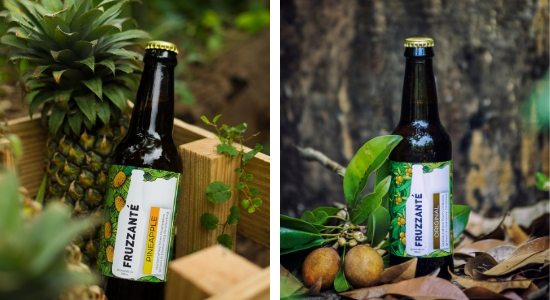
The genesis of the idea untwines the hands of time to my childhood days. I was raised in the chikoo orchards of Dahanu-Gholvad, hence the significant affection for and intimate bond with farm-grown fruits. Things took a turn for the worse when a seed borer disease severely affected the chikoo market in 2004. Farmers’ hands were tied, and they resorted to cutting off the plantations. That struck a chord amongst the entire region, which was the moment that our quest for recognition was coupled with the ardent desire of revival. Hence, our initial idea was to process chikoo in a package-able form. On arriving at the conclusion that it is in the nature of the fruit to ferment, we proceeded to brew a cider-style alco-beverage.
What makes the Fruzzante products different from that of other alcohol beverage players?
There’s a stark difference between Fruzzante and other players because we are the world’s first and only producer of a cider-style alco-beverage made from chikoo/sapota. We are in turn the only company producing fruit-based and non-grape bottled products in the wine category that is, currently, commercially available. We are both vegan and gluten-free which makes it a healthy choice as well.
In addition, Fruzzante products are also unique in the sense that they are all home-grown with our brewery set up in the family’s Hill Zill resort in Bordi, 25 km from Dahanu. Apart from intending to glamorize the cider and fruit industry, we earnestly work to put out local farmers on the map.
By far, which beverage is people's favourite?
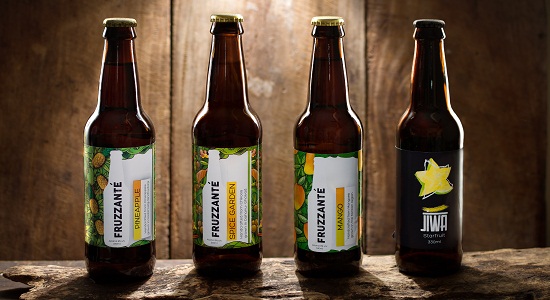
Even though we have other variants in the gluten-free range like Pineapple, Mango, and Spice Garden (Cinnamon, Ginger and Honey), our flagship cider-style alco-beverage made from chikoo is still the most favoured of the lot.
Your business model to reach out to more customers?
In order to reach out to more customers, we envision working with several other fruits while maintaining quality standards. We have currently four varieties of Fruzzante and we are planning to add newer fruits under this brand. We also have a sparkling white wine from Starfruit blended with grapes under the brand name JIWA and a premium honey dessert wine or mead under the brand name ARKA.
In addition, people are looking for authenticity in the products they use because they are being bombarded with adulterated ones. We, therefore, strive to represent honest producers who understand the need of the market and bridge the gap through authentic, unadulterated, and tested products. As a home-grown brand, we bring the traits of understanding, compatibility, and reliability to the table.
How do you price the products?
The wine MRP is Rs 255 for 330ml. The cost is also considering the 100% excise duty applicable on the product, unlike grape wines that are duty-free in Maharashtra. Also, 20% VAT is applicable, unlike grape wines that enjoy a 16% rebate. We have approached state governments several times to treat all fruit wines as equal and be given the same benefits as grape wineries enjoy. However, we await an answer on the same.
Also Read: Healthy Alcohol, Premium Rose - The 2019 Alco-Bev Trends To Watch Out For In India
Where do you source your ingredients from?
As mentioned, our wines are brewed only with local produce obtained from the farmers only. Our labels indicate the location of the fruit procured. For instance, chikoo is procured from Dahanu-Gholvad while pineapple from Dodamarg-Sindhudurg all located in the Konkan region of Maharashtra. The farmers are active participants in the entire process and we recognize their efforts by mentioning them on our product labels.
Your expansion plans?
Apart from tying up with a few distributors to make a good distribution network in Maharashtra, we further envision working with several other fruits in the future while striving to maintain quality standards. We are looking to add strawberry from Mahabaleshwar and oranges from Nagpur soon.
Key challenges you faced initially with Fruzzante?
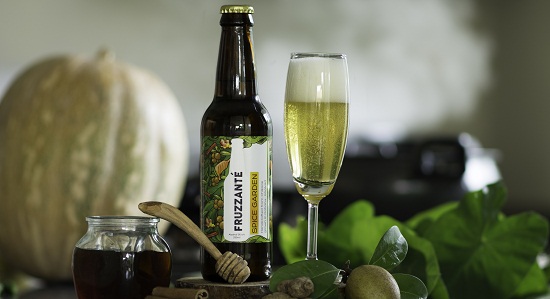
We, initially, found chikoo to be a laborious fruit to attract in the market; there were problems of high pH levels, uneven ripening and low shelf-life. Chikoo is immensely dissimilar to fruits like grapes which ripen naturally and harvest easily. It rather requires controlled environments, and hence we resorted to ripening in chambers that control the natural ripening process as opposed to non-organic means. The benefit was uniform ripening and better quality of juice, thereby, resulting in a quality product.
We invariably faced several challenges in terms of processing the fruit where our experience spanning over a decade in Mechanical Engineering came to the fore. We also implemented sustainable means for cost savings which include north facing stilt levels (least sun exposure) for winery location to ensure less cooling load resulting in power savings. The further implementation of ozonators helped maintain hygienic and sterile conditions in the facility to keep the products free from unwanted bacteria and viruses.
There were also challenges in packaging the highly perishable fruit, which was eventually solved with the help of a fully automatic bottling filling machine. This enabled appropriate and efficient rinsing, filling, and capping of the bottles. Therefore, the bottling along with our air-conditioned storage facility helps maintain comfortable temperatures for product storage.
With all the challenges we have faced, we haven’t relinquished or compromised on our stance of placing quality before anything else; a vital element in any process.
The key challenges you foresee and how do you plan to cope?
The key challenge is to compete against the grape wine industry that enjoys 100% excise duty exemption as well as VAT rebate. Due to tax implication, our cost is higher as compared to a grape wine of a similar nature. The USP of our product that it’s made from actual fruits without the use of colours or flavours attracts the consumers. We are in talks with the government for extending the same tax holiday that the grape wine industry enjoys.
Your take on helping the native Warli Tribe?
Fruzzante is a brand that is socially aware as it is innovative. We never fail to understand the vital role played by the native Warli Tribe. Apart from promoting native growers by mentioning them on each product, the proceeds from the sale of the special “Starfruit Jiwa” flavour of the drink are contributed for the well being of the native Warli tribe. They deserve immense credit for their perseverance and efforts in reviving the chikoo market.
How do you see the concepts like Fruzzante for the Indian market - in terms of customers and consumers both?
Authenticity, reliability, and quality are the core aspects consumers are either consciously or subconsciously seeking in today’s market. Hence, more home-grown concepts built on these three pillars are likely to impress them and, thereby, garner recognition. The modern market is much more inclusive of audiences than it was perhaps a decade ago, with more emphasis on individual experience rather than aggregates. Hence, it would bode well for new players to derive something meaningful and take the consumer through an engaging journey.
Copyright © 2009 - 2025 Restaurant India.





